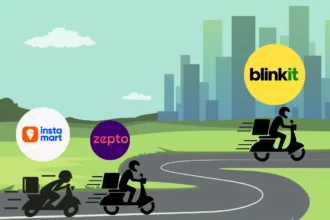Estimated Reading Time: 28-30 minutes ( 5,478 words)
Introduction
Watching a film in theatres used to feel like an unmissable event in India — the buzz of a Friday release, the collective cheer in single screens, the star-driven marketing blitz, and the box-office records that dominated headlines. For decades, this ecosystem fueled not only entertainment but also employment, tourism, and technology adoption. Yet, beneath this glittering surface lies a growing challenge that has stubbornly refused to disappear: film piracy. Despite advances in streaming, encryption, and anti-piracy laws, the illegal copying and distribution of movies continues to erode the core economics of Indian cinema.
In today’s digital era, piracy is no longer limited to shady DVDs or torrent sites. It’s evolved into a multi-platform menace, spreading across Telegram channels, social media groups, mirror sites, and even fake OTT apps. The problem is particularly acute in Bollywood, where high-budget blockbusters are often leaked within hours—or sometimes before—their theatrical release. This not only reduces ticket sales but also affects international markets, brand partnerships, and satellite rights. According to Statista and the Motion Picture Association, India loses over ₹20,000 crore annually to film piracy, making it one of the hardest-hit entertainment markets globally.
This article dives deep into how piracy still impacts Bollywood’s box-office revenue, audience behavior, and digital ecosystem in 2025. You’ll discover the latest statistics, real-world case studies of films that suffered leaks, and expert-backed strategies to minimize losses. Whether you’re a filmmaker, distributor, OTT executive, or even a content creator aiming to build authority in entertainment blogging, this guide is your roadmap to understanding—and countering—the economics of piracy.

The Scale of Piracy in India & Bollywood
🎬 2.1 Key Statistics: 2023–24 — The Big Picture
Piracy in India isn’t a small leak — it’s a flood that’s washing away box office profits. Here’s how big the problem really is:
💰 Total Losses:
- India’s media & entertainment industry lost a whopping ₹22,400 crore (≈ US$2.7 billion) in 2023 — all because of piracy! (EY + IAMAI “Rob Report 2024”)
- That’s *more than the entire yearly revenue of some OTT platforms combined!
🎟️ Where the Money Leaks Happen:
- Theatres: ₹13,700 crore lost — thanks to camera prints, screen recordings, and leaks within hours of release.
- OTT Platforms: ₹8,700 crore gone — from illegal downloads, fake streaming sites, and Telegram leaks.
- Together, that’s over 20% of Bollywood’s potential box-office value wiped out!
📱 How People Pirate:
- 63% – through streaming sites and live leaks (the biggest culprit!).
- 16% – via shady mobile apps that look like legit OTTs.
- 21% – through torrent sites and social media sharing groups.
(EY + NDTV Profit + TOI reports)
👀 User Habits — The Reality Check:
- 51% of Indian digital users accessed pirated content at least once in 2023.
- That means 1 out of every 2 viewers isn’t paying for what they watch.
- Piracy has gone from being “illegal” to “normal” for many — a worrying cultural shift.
🕵️♀️ Fun but Frightening Fact:
- In 2016, when demonetisation hit theatres, The Express Tribune noted that piracy also took center stage — showing how resilient and adaptable it is, no matter the decade or technology.
🎥 2.2 Bollywood-Specific Loss Examples — Real Drama Off-Screen!
Bollywood’s blockbusters may win hearts, but piracy keeps stealing wallets:
- 💔 “Sikandar” (2025): Suffered ₹91 crore in estimated losses after the full film leaked online before release. (The Times of India)
- 🎞️ Past Reports: Even back in the late 2010s, Mumbai Mirror estimated ₹1,500 crore in annual losses due to piracy — and the figure’s only grown since.
- 🧾 Modern Leaks: Big-budget films like Pathaan (2023) and Jawan (2023) faced partial leaks within hours of their premiere — but survived thanks to massive fan turnouts and strict takedown efforts.
📊 Quick Fact-Box (For Skimmers!)
- 🎭 51% of Indian media users watch pirated content.
- 💸 ₹22,400 crore lost in 2023 due to piracy.
- 🍿 Theatre Piracy: ₹13,700 crore hit.
- 📺 Streaming Piracy: ₹8,700 crore hit.
- 🌐 Top Source: Streaming sites = 63% of all piracy.
Why Piracy Hurts the Box Office
Piracy isn’t just an ethical or legal problem — it’s a full-blown economic virus that eats into Bollywood’s bottom line at every stage: pre-release, theatrical run, and digital monetization. Here’s how it systematically damages the box office and film business model in India.
🎟️ 3.1 Direct Revenue Loss — Every Pirated View = One Ticket Lost
- When a film leaks before or shortly after release, every illegal stream or download directly reduces ticket sales. Viewers who might have gone to theatres opt for a “free” version instead.
- For big-budget releases (₹100+ crore films), even a 2–3% dip in occupancy can mean crores in lost revenue per weekend.
- Case in point: “Sikandar” (2025) reportedly lost ₹91 crore after the full film appeared on Telegram and pirate sites two days before its release. Even massive marketing couldn’t reverse the damage.
- Similar instances — such as Kabir Singh (2019) and Laal Singh Chaddha (2022) — saw pre-release leaks dampen their opening weekend momentum, forcing producers to rely on OTT rights and international screenings to recover.
- With the average Bollywood film earning 50–60% of its total revenue in the first week, a piracy leak can destroy its commercial trajectory before word-of-mouth even begins.
💡 In simple terms: a ₹500 movie ticket becomes ₹0 when pirated — multiplied by millions of views, that’s a financial bloodbath.
👥 3.2 Consumer Behaviour Shifts — Free Feels Better (to Many)
- Affordability & Access: Pirated content is usually free, instantly available, and doesn’t require switching between multiple streaming platforms. The EY/IAMAI 2024 report found that “unavailability of desired content” and “high subscription fees” were top reasons users resort to piracy.
- Regional Delays: Bollywood often releases dubbed or regional versions weeks later. By then, pirated versions already circulate, undercutting potential revenue in South India, Nepal, or the Gulf region.
- OTT Fatigue: With viewers juggling subscriptions for Netflix, Disney+ Hotstar, JioCinema, and others, many prefer to pirate rather than pay for multiple plans.
- Normalisation of Piracy: When 51% of Indian internet users admit to consuming pirated media, it becomes culturally normalized — especially among youth who see it as “not a big deal.”
- Psychological Impact: The convenience of “free” content erodes the emotional pull of going to the cinema. Theatres become “optional,” especially for mid-budget films without major stars.
💬 Quote from EY Report:
“As long as access and affordability remain barriers, piracy will continue to masquerade as convenience.”
⏳ 3.3 Release Strategy & Time-Window Impact — Timing is Everything
- Pre-Release Leaks = Maximum Damage: A film leaked before release kills the “event factor.” Audiences who might have queued up for Day 1 shows instead watch low-quality versions at home.
- Weekend Box Office Drop: Piracy hits right where it hurts most — the first weekend. Early leaks reduce footfall, weaken hype, and trigger bad word-of-mouth if the pirated print is poor quality.
- Shorter Theatrical Windows: To counter leaks, studios often rush OTT releases (within 2–3 weeks), but this can cannibalize theatre revenue. The excitement to watch in cinemas declines if audiences know it’ll stream soon.
- Long-Term Impact: Over time, producers may start budgeting lower for theatrical releases or skip them altogether — reshaping Bollywood’s traditional release model.
- Global Markets Affected: Pirated prints from India quickly spread to the UAE, UK, and US — all strong overseas markets for Hindi films, further shrinking potential revenue.
💡 Example: After multiple piracy leaks in 2023, several Indian studios signed “simultaneous release” deals with OTTs to minimize leakage — but this also split audience attention and marketing focus.
📊 Quick Takeaway Box: Why Piracy Still Hurts Bollywood
- 🎥 Each pirated download = lost ticket revenue
- 💸 ₹22,000+ crore annual industry loss
- 🧍♂️ 51% of Indian viewers admit to piracy
- ⏱️ Early leaks ruin weekend box office
- 🌍 Global markets lose from shared pirated copies
- 💻 OTT fatigue fuels illegal viewing habits
Case Studies — When Piracy Becomes the Villain
Piracy isn’t just an abstract industry threat — it has left visible scars on Bollywood’s biggest blockbusters. From star-driven spectacles to mid-budget thrillers, no production is fully safe. Below are two striking real-world examples that show how leaks can cripple even the most anticipated releases.
🎬 4.1 Case Study: Sikandar (2025)
The highly anticipated Salman Khan starrer Sikandar, directed by A.R. Murugadoss, was expected to be one of the biggest releases of 2025. With a reported production and marketing budget exceeding ₹250 crore, the film was primed for a massive opening across 4,000+ screens in India and over 1,200 screens overseas. However, just 48 hours before its theatrical release, a high-definition (HD) version of the film was leaked online, reportedly through a compromised digital transfer during the post-production phase.
According to The Times of India (2025), producers estimated losses of up to ₹91 crore in potential box office revenue due to the leak. Within hours of the breach, pirated versions of Sikandar were trending across Telegram, Tamilrockers, and multiple mirror sites. Even though the production team launched an aggressive takedown campaign with the Cyber Cell and Delhi High Court’s “John Doe” orders, thousands of illegal downloads had already occurred.
The fallout was immediate: despite Salman Khan’s massive fan base, Sikandar’s opening weekend collection fell 20–25% below projections. Multiplex chains reported lower-than-expected footfall in Tier-2 and Tier-3 cities — the same markets most exposed to mobile piracy. Insurance experts told The Economic Times that film producers are now exploring “piracy insurance” coverage, which would compensate for verified revenue loss caused by leaks.
💡 Lessons from Sikandar
- 🔐 Leak controls during post-production, DCP (Digital Cinema Package) transfer, and preview screenings are absolutely critical.
- 🛡️ Piracy insurance and digital watermarking should be part of standard production budgets going forward.
- 🎟️ Early theatrical days are most vulnerable — one pre-release leak can derail the “opening weekend” momentum that drives 60% of a film’s earnings.
- 📉 Star power alone can’t save a film if piracy cuts into audience curiosity and theatre excitement.
🎥 4.2 Case Study: Raees (2017)
Shah Rukh Khan’s Raees (2017) was one of the most talked-about releases of its time — a crime drama with massive pre-release buzz and a powerful marketing push. However, soon after release, Raees became the most pirated Hindi film of 2017, with over 6.2 lakh unique file-sharers globally according to Wikipedia and TorrentFreak.
Despite a strong start at the box office, industry analysts noticed a sharp decline in ticket sales by the second week, correlating with the viral spread of the pirated version. The film’s domestic earnings were reportedly 10–15% lower than initial trade expectations, suggesting that piracy significantly affected repeat viewership and late adopters who preferred watching it online for free.
The case of Raees underscored how digital piracy had gone global. The film’s pirated prints appeared in Pakistan, UAE, the UK, and even on US-based servers — proving that a leak in India can ripple across continents within hours. The episode pushed Red Chillies Entertainment (SRK’s production company) to tighten digital distribution protocols for later projects like Zero (2018) and Pathaan (2023).
💡 Lessons from Raees
- 🌍 Global piracy networks mean an Indian leak quickly turns into an international problem.
- 🧠 Even star-studded films aren’t immune — big budgets and hype don’t guarantee immunity from piracy losses.
- 🔍 Post-release monitoring is as crucial as pre-release protection — continuous digital takedowns can reduce long-term revenue loss.
- 📊 Correlation confirmed: films with high piracy rates often see weaker box office “legs” (sustainability beyond week one).
📊 Quick Summary: What These Cases Reveal
- ⚠️ Pre-release leaks can wipe out up to 30% of projected earnings within days.
- 📱 Telegram, torrents, and fake OTT apps are now the biggest piracy channels.
- 💼 Producers are investing in anti-piracy tech, watermarks, and insurance to manage risk.
- 🎞️ Monitoring piracy post-release helps protect long-tail revenue from OTT, satellite, and international rights
Outlook: The Next 10 Years for Bollywood & Piracy
As we move deeper into the digital decade, Bollywood’s relationship with piracy is evolving — not disappearing. The fight between convenience (legal OTT access) and cost-free temptation (illegal downloads) will shape how India’s film economy matures. While data points to growing legitimate consumption, the threat from piracy continues to morph, becoming smarter, faster, and more networked. Here’s what the next 10 years could look like:

🎥 5.1 The Rise of Legal Streaming & Shifting Viewer Habits
India’s digital video subscription market is projected to grow to ₹103 billion by 2026 (EY-FICCI Report), with platforms like Netflix, Amazon Prime Video, Disney+ Hotstar, JioCinema, and SonyLIV driving unprecedented reach. Affordable data, vernacular content, and bundling with telecom plans are pulling millions into legitimate ecosystems. This shift may gradually reduce casual piracy, especially among urban users who value convenience and quality.
However, rural and semi-urban regions — where high-speed internet penetration outpaces payment willingness — remain piracy hotspots. The paradox? The same technological access that enables streaming also fuels illegal sharing through Telegram, torrent sites, and WhatsApp groups. Over the next decade, OTT giants are expected to counter this by expanding low-cost subscription tiers, regional payment options, and simultaneous global releases, making piracy less “worth the effort” for users.
🔐 5.2 Organised Piracy 2.0: The New Digital Menace
Piracy has gone beyond fuzzy camcorder recordings. The new threat is organised, tech-enabled, and borderless. Leaks often emerge not from theatre halls but from the post-production and digital distribution chain, where screeners or DCP (Digital Cinema Package) files get compromised. High-definition pirated versions can appear online within hours of theatrical release — sometimes even before premiere day.
Expect piracy groups to use AI-driven watermark removal, mirror sites, and encrypted distribution to stay ahead of enforcement. In response, Bollywood studios will need to invest in blockchain-based content tracking, forensic watermarking, AI-driven content monitoring, and legal cyber alliances. The goal isn’t just to punish pirates, but to make piracy economically and logistically unviable.
Legislative action will also matter. Stronger enforcement under India’s Cinematograph (Amendment) Act 2023, which introduces jail terms and hefty fines for piracy, will likely intensify over the next decade. Yet, sustained deterrence will depend on faster legal action, real-time takedowns, and global cooperation with cybercrime units.
🎞️ 5.3 Box Office Resilience: The Experience Era
Theatrical success in the 2030s will rely not just on content, but on creating experiences piracy can’t replicate. Think premium large formats (IMAX, 4DX, recliner multiplexes), immersive sound, fan screenings, and influencer tie-ins. Films that become “events” — rather than mere releases — will retain their draw even in a piracy-heavy environment.
Another emerging strategy is “rapid legal rollout” — shortening the window between theatre and OTT releases. A 4–6 week gap (instead of 8–12) helps capture both the theatre audience and OTT viewers before piracy fills the void. Producers will increasingly plan hybrid release strategies, including early pay-per-view or premium digital premieres, to cut piracy-led losses.
In short, the future of box office resilience will hinge on three pillars:
- Experience: Making theatres worth the price of entry.
- Speed: Releasing legal digital versions fast enough to undercut pirates.
- Protection: Investing in secure distribution tech and piracy insurance.
🧠 5.4 The Blogger & Creator Opportunity
For media professionals, content creators, and film bloggers, the coming decade presents a huge opportunity. Tracking piracy trends, interviewing anti-piracy tech startups, covering enforcement updates, and analysing OTT economics can position your blog as a trusted authority in entertainment-business journalism.
Audiences increasingly crave insight-driven, data-backed content, not just gossip. A creator who breaks down how leaks affect opening weekends, or how watermarking tech works, will attract both readers and industry collaborations. In essence, as Bollywood upgrades its defenses, smart creators who document this transformation will thrive alongside it.
✨ Summary:
Bollywood’s piracy problem won’t vanish overnight — but it will evolve. Legal OTT growth, smarter enforcement, experiential theatre design, and technological integration promise a more balanced ecosystem by 2035. The winners will be the filmmakers who embed anti-piracy at every stage, and the storytellers — including bloggers — who chronicle this digital tug-of-war with clarity, evidence, and optimism.
How Filmmakers Can Protect Their Release
Piracy prevention isn’t just about playing defense — it’s about building an airtight system from script to screen. In an age where a single leaked file can cause crores in damage, Bollywood filmmakers must treat anti-piracy as a core business strategy, not an afterthought. Below is a detailed framework outlining actionable steps across three critical stages: pre-release, release-window, and post-release protection.
🎬 6.1 Pre-Release Safeguards: Lock It Before You Launch
The biggest leaks often happen before a movie even hits theatres — during editing, test screenings, or when digital masters are transferred between vendors. Here’s how to tighten the chain:
- Secure chain-of-custody: Every copy of the film, from the rough cut to the final master, should have a digital watermark and encryption. Services like NAGRA, VdoCipher, and Irdeto provide enterprise-grade encryption that can trace leaks to the source.
- Encrypted Dailies & Cloud Access: Avoid sharing raw footage via unsecured links or drives. Use password-protected streaming for internal review.
- Strict NDAs & Limited Access: Cast, crew, editors, and VFX partners must sign non-disclosure agreements with legal consequences. Restrict access to final prints only to essential personnel.
- Digital Transfer Protocols: Use encrypted DCP (Digital Cinema Package) transfers rather than open hard drives or email links.
- Pre-release monitoring: Hire specialist firms or use AI tools like MUSO, Pex, or MarkMonitor to scan dark web and torrent sites weeks before release.
- Piracy Insurance: Following the Sikandar (2025) incident, producers have started considering insurance policies that cover losses due to leaks or piracy. As per The Economic Times, these clauses can protect both theatrical and OTT revenues in case of early leaks.
💡 Pro Tip:
Include piracy risk assessment in your pre-production checklist. Allocate 2–5% of your total budget to cybersecurity, content protection, and contingency funds for legal takedowns or crisis PR if leaks occur.
🍿 6.2 Release-Window & Streaming Strategy: Timing is Everything
Once your film hits the market, timing and accessibility play a major role in minimizing piracy. The goal is to make the legal option easier and more rewarding than the illegal one.
- Shorter Release Gaps: Reduce the window between theatrical and OTT release from 8–12 weeks to 4–6 weeks. This shortens the piracy window and keeps consumer excitement alive.
- Simultaneous Multi-Language Releases: Piracy thrives when viewers can’t find dubbed or regional versions. Launch all versions together to stop audiences from turning to illegal sources.
- Global Day-and-Date Releases: Consider simultaneous worldwide premieres (as seen in major Hollywood titles) to limit cross-border leak sharing.
- Premium Theatre Experience: Offer formats pirates can’t copy — IMAX, 4DX, Dolby Atmos, recliners, or fan-event screenings — to make movie-going feel worth paying for.
- Aggressive First-Weekend Marketing: Focus your campaign on the first 72 hours post-release, when piracy hasn’t yet saturated the market. Push for record attendance through influencer campaigns, limited-edition merchandise, and cross-platform engagement.
- OTT Partner Collaboration: Ensure your streaming partner uses advanced DRM (Digital Rights Management) and watermarking to prevent post-digital piracy.
⚠️ Warning:
A delayed digital release or poor communication with OTT platforms can increase piracy exponentially — fans seeking “instant access” often end up downloading illegal copies.
🕵️♂️ 6.3 Post-Release Monitoring & Takedowns: Stay Vigilant After Launch
The battle doesn’t end after the premiere — in many ways, it begins there. Proactive monitoring and takedowns can save millions in post-release revenue.
- Real-Time Scanning: Set up round-the-clock surveillance for pirated uploads across torrent sites, Telegram channels, and social media groups. AI detection tools like Pex Protect and Motion Picture Association’s ACE program can automate this process.
- Rapid Takedown Requests: File immediate DMCA takedowns with ISPs, hosting companies, and content-sharing platforms. Quick action (within 6–12 hours) drastically reduces file-sharing spread.
- Forensic Watermarking: Every legal copy (press screenings, festival submissions, digital transfers) should have an invisible watermark identifying its source. If leaked, the origin can be traced within minutes.
- Collaboration with Law Enforcement: Partner with cybercrime units and industry associations like FICCI Frames or Producers Guild of India for swift action against repeat offenders.
- Public Awareness Campaigns: Use your social media and marketing reach to educate fans about piracy’s legal risks and moral costs. Campaigns like #WatchItLegit can improve audience perception and brand loyalty.
💬 Pro Tip:
Use post-release monitoring data as feedback for future productions — track where leaks emerged, which formats were compromised, and how quickly they spread. This insight can inform your next anti-piracy strategy.
🔔 Summary:
The key takeaway? Piracy prevention is a 360° process, not a one-time action. From pre-production security and smart release scheduling to continuous digital vigilance, the more structured your anti-piracy strategy, the higher your chance of retaining profits and protecting your creative work.
What Viewers & Consumers Should Know 🎬💡
Piracy isn’t just a “studio problem” — it’s a viewer problem too. Every time someone streams or downloads a pirated movie, the ripple effects hit far beyond the box office. From quality of future films to your own device’s safety, piracy has real-world costs. Let’s break it down — point by point, fun-to-read, and fact-backed 👇
🍿 1. Piracy Shrinks the Magic of Movies
- When you stream a pirated film, it’s not just the big producers losing money — it’s hundreds of workers behind the scenes: editors, spot boys, VFX artists, lyricists, and junior technicians.
- Less revenue = smaller budgets = fewer risks taken. Studios stick to “safe bets” (sequels, remakes, formula plots) instead of bold, creative cinema.
- Ever wondered why fewer regional films get dubbed in Hindi or released internationally? Piracy drains funds that could’ve gone into language adaptation, dubbing, and subtitles.
- So yes — that one “free movie” online could be the reason your favorite director doesn’t get to make their next dream project.
🧠 2. Piracy Isn’t Free — You’re the Product
- Many pirated sites look harmless… until they infect your device with malware, steal your data, or hijack your browser.
- According to a CyberMedia Research (CMR, 2024) study, over 43% of piracy-site users in India reported malware attacks or data theft after visiting illegal streaming links.
- Some fake “free OTT apps” even plant spyware — tracking your contacts, location, and passwords.
- Beyond tech risks, there’s a legal angle too: under India’s Cinematograph (Amendment) Act, 2023, even viewing pirated content knowingly can lead to fines or penalties.
- And let’s be honest — that shaky, cam-ripped, muffled-audio version? It ruins the story’s magic. You deserve better than that.
💰 3. Paying for Legal Streaming = Investing in Better Cinema
- When you buy a movie ticket or subscribe to OTT, your money doesn’t just vanish — it funds creativity. It helps studios produce more content, OTTs acquire more rights, and new talent find opportunities.
- Every legal view supports actors, composers, cinematographers, and the next generation of storytellers who rely on fair revenue.
- OTT platforms reinvest subscription money into better tech (HDR, Dolby Vision, smoother streaming) — meaning you get better quality, safer viewing, and richer libraries.
- Supporting the legit route also empowers regional and indie filmmakers. The more views their films get legally, the more they’re promoted on big platforms — making diversity thrive.
- So, when you choose Netflix, Prime Video, Hotstar, or your local theatre instead of a shady site — you’re helping keep the movie ecosystem alive, creative, and sustainable. 🎥✨
❤️ 4. The Feel-Good Factor: Be a Hero for Cinema
- Love your favorite actor? Support their work the right way. Legit views push box office and OTT metrics up, which directly influences casting, sequel funding, and production scale.
- Be part of the #WatchItLegit movement — the growing global trend where fans proudly call out piracy and promote ethical viewing.
- You can even join discussions online, report piracy links, or share where to watch movies legally — it all helps!
- Remember: every legal view counts. Think of yourself as part of the production — your support fuels the next blockbuster.
🎬 Quick Recap: Why You Should Avoid Piracy
✅ It kills creativity & movie diversity
✅ It risks your data and device
✅ It funds illegal networks instead of artists
✅ It’s against the law
✅ It deprives you of the full, cinematic experience
💡 Fun Challenge for Readers:
Next time you’re tempted to click a “Free HD Movie” link, stop and ask yourself:
Would I still enjoy this film if it meant the next great one never got made?That’s the real cost of piracy — and you have the power to change it. 🌍🎥
Key Facts & Statistics Box
| Fact | Value |
| Loss to piracy (India entertainment industry, 2023) | ₹22,400 crore The Times of India+1 |
| Share of losses from theatre-based pirated content | ₹13,700 crore NDTV Profit+1 |
| Share of losses from OTT-based pirated content | ₹8,700 crore NDTV Profit |
| % of Indian media consumers accessing pirated content | 51% EY+1 |
| % of piracy sources from streaming apps | 63% EY |
FAQs Section
1. What exactly counts as “piracy” in the context of Bollywood films?
Piracy means any unauthorised copying, sharing, or use of a movie without the rights-holder’s permission. This includes:
- Camcorder recordings of films inside theatres.
- Uploading or downloading movies from illegal websites or torrent platforms.
- Sharing unlicensed versions on Telegram, WhatsApp, or social media groups.
- Leaks of pre-release screeners, digital masters, or DCP files from within production chains.
Pirated OTT apps or mirror sites hosting copyrighted films for free.
In short — if you didn’t pay for it, stream it legally, or get it from an authorised platform, it’s piracy.
2. How much revenue does Bollywood lose each year because of piracy?
The exact figure varies by year and source, but industry-wide reports agree the losses are massive. According to the Ernst & Young + IAMAI “Rob Report” (2023), India’s media & entertainment sector lost ₹22,400 crore (≈ US$2.7 billion) to piracy in 2023. Of that, ₹13,700 crore came from theatrical piracy and ₹8,700 crore from OTT leaks (Times of India, NDTV Profit).
Bollywood, being India’s largest film segment, absorbs a major chunk of this hit — especially from pre-release leaks and first-weekend losses.
3. Does piracy always reduce box-office profits for a film?
Not always in a direct 1:1 ratio — some blockbusters with huge star power (Pathaan, Jawan) can survive leaks due to strong FOMO-driven theatre demand.
But for mid-budget or niche films, piracy can:
- Slash ticket sales by 20–40%.
- Devalue digital and satellite rights.
Kill long-tail revenue from smaller towns and re-runs.
Even when a film survives commercially, piracy weakens confidence for future investments, especially in new or regional content.
4. What types of piracy are most damaging for box-office performance?
The timing and quality of a pirated copy determine its damage level:
- Pre-release leaks (like in the Sikandar 2025 case) are the most destructive — killing hype and reducing opening-week attendance.
- High-definition uploads within 48 hours of release deter casual theatre-goers.
- Mass streaming or Telegram leaks spread faster than takedown teams can act.
- International leaks often reach NRIs before the film’s official release abroad, hurting overseas revenues.
5. Are regional-language films impacted the same way as Bollywood films?
Yes — sometimes even more severely.
Regional films (Tamil, Telugu, Malayalam, Kannada, Marathi, Bengali) often:
- Have smaller marketing budgets, making piracy-driven word-of-mouth harder to combat.
- Depend heavily on early theatrical revenue since OTT or overseas rights are limited.
- Suffer from delayed dubbed/subtitled releases, pushing impatient fans toward pirated versions.
- For example, blockbuster leaks like Pushpa (2021) and RRR (2022) were viewed illegally across multiple countries within hours of release.
6. What tools or methods does the film industry use to combat piracy?
The modern anti-piracy toolkit is part tech, part legal muscle. Some key measures include:
- Forensic watermarking: Embeds invisible markers in film copies to trace leak sources.
- Digital Rights Management (DRM): Protects content on OTT and VOD platforms.
- Encrypted DCPs & Cloud Storage: Prevents unauthorised copying during transfer.
- AI-based Monitoring: Real-time web scanning tools (like MUSO, Pex Protect, MarkMonitor).
- Rapid Legal Takedowns: Filing DMCA notices and working with ISPs to remove infringing links.
- Anti-cam measures: Infrared scanning and night-vision surveillance inside theatres.
- Insurance Clauses: Cover losses from leaks, as seen in Sikandar (2025) (Economic Times).
7. How can viewers and fans help reduce piracy’s impact?
Every viewer plays a role in the movie economy. Here’s how you can help:
- Watch films only in theatres or verified OTT apps.
- Avoid clicking on “free movie download” links — they’re often malware traps.
- Report pirated versions to official handles (many OTTs and studios accept DMs).
- Educate others — explain how piracy hurts the creative teams behind movies.
- Join awareness drives like #WatchItLegit or #SupportCinema on social media. Remember: every legal view strengthens the system that brings you better stories. 🎥
8. Are there legal consequences for piracy in India?
Yes — piracy is a criminal offence under Indian law.
Under the Copyright Act (1957) and Cinematograph (Amendment) Act, 2023, penalties include:
- Up to 3 years imprisonment.
- Fines up to ₹10 lakh.
- Seizure of devices or servers used for piracy. Even viewers who knowingly stream or download pirated films may face legal notices or fines. The government and industry bodies like FICCI and MPA-India have also started cyber-tracking major offenders.
9. How will India’s growing OTT market affect piracy in the future?
The OTT boom has already reduced piracy in urban markets by offering affordable, instant access. Platforms like JioCinema, Netflix, Prime Video, and Zee5 now offer multi-language libraries and cheaper mobile-only plans.
However, challenges remain:
- Fragmented platforms (too many apps, each with separate fees) push users back toward illegal sites.
- Regional access gaps — when dubbed versions are delayed, users turn to torrents.
- The solution lies in affordability + simultaneous release + convenience. OTTs that master this formula will naturally undercut piracy.
10. How much should a filmmaker budget for anti-piracy measures?
While there’s no industry-wide rulebook, experts recommend allocating 2–5% of the total film budget toward:
- Encrypted digital delivery systems.
- Forensic watermarking.
- Real-time monitoring tools.
- Legal retainer or takedown services.
- Piracy insurance coverage (especially for ₹50+ crore productions).
- In the Sikandar (2025) case, producers reportedly factored in such measures after suffering pre-release leaks — a lesson many studios are now learning proactively. (Economic Times, Times of India).
11. Can piracy ever help a film by acting as free marketing?
Some claim leaked copies “create buzz” or “expand reach,” but this is largely a myth.
While a leak might raise curiosity, it simultaneously:
- Damages box-office and streaming revenue.
- Reduces trust among distributors and partners.
- Undermines future brand collaborations.
- Spreads poor-quality versions that ruin the cinematic experience.
- In short — piracy’s short-term “buzz” never outweighs its long-term harm. The smarter path is strategic marketing, influencer-driven promotions, and legal early previews to generate buzz without breaking the system.
12. What can the Indian government do better to combat piracy?
India is tightening its anti-piracy laws but needs faster real-time enforcement. Some emerging steps include:
- Empowering cybercrime units to take down illegal domains immediately.
- Strengthening the Cinematograph (Amendment) Act, 2023, which criminalises recording inside theatres.
- Launching public awareness campaigns like “Think Before You Stream.”
- Collaborating with global copyright watchdogs to trace leaks hosted abroad.
- The long-term win lies in public education — combining strict law with awareness about how piracy destroys creativity.
In Summary:
Piracy may feel invisible, but it quietly eats away at creativity, jobs, and innovation in India’s film ecosystem. With OTT growth, better laws, and informed viewers, Bollywood’s next decade could finally turn the tide. The key? Every watch counts — and every illegal click hurts.
Summary / Key Takeaways
- Piracy remains a major threat to Bollywood’s box office, with large-scale losses estimated at ₹22,400 crore for the Indian entertainment sector in 2023.
- The damage is not only about lost tickets — it includes erosion of digital-rights value, reduced long-tail returns, and weakened theatrical windows.
- Case studies (like Sikandar) show how pre-release leaks can directly translate into hundreds of crores in losses.
- Filmmakers and distributors must treat anti-piracy strategically: from production to release to digital lifecycle.
- Viewers, too, play a role — legal consumption helps sustain the ecosystem.
- For content creators/bloggers, this topic offers rich opportunities (data-driven articles, anti-piracy tool reviews, industry interviews) with strong SEO potential and monetisation options.

Conclusion
Piracy might seem like an unavoidable reality of modern Indian cinema — a silent cost every producer factors in — but it doesn’t have to stay that way. The growing availability of anti-piracy technology, evolving legal frameworks, and smarter audience engagement have made it possible for Bollywood to push back more effectively than ever before. What used to be an uncontrollable loss can now be managed, measured, and even mitigated through timely digital monitoring, coordinated takedown strategies, and better access models for audiences. The success stories of studios that invested in digital rights protection and early OTT releases prove that proactive steps can make a real difference.
For filmmakers, producers, and distributors, understanding the economic and psychological drivers of piracy is key. It’s not only about punishing offenders — it’s also about making legitimate access easier, faster, and more rewarding. Audiences pirate not always out of intent to harm, but often due to convenience gaps or delayed regional availability. Closing those gaps through smart release strategies, multi-language versions, and budget-friendly OTT access can turn potential pirates into paying fans. For smaller studios, partnerships with trusted digital distributors and insurance against leaks can offer a safety net while preserving brand trust.
And for you — whether you’re a content creator, entertainment blogger, or digital strategist — this topic offers immense relevance and monetisation potential. By producing SEO-rich, informative, and awareness-driven content on piracy, you’re not just ranking for high-search keywords — you’re helping shape a healthier film economy. Every article that explains the cost of piracy or guides users toward legal streaming contributes to a more sustainable creative ecosystem. In the end, combining awareness with accessibility is the real blockbuster formula — one that benefits the industry, creators, and your own blog growth alike.
References & Sourcesv
- Statista (2025): “India’s Film Industry Revenue and Piracy Loss Estimates” – www.statista.com
- Motion Picture Association (MPA) Report, 2024: “Global Content Protection & Piracy Trends” – www.motionpictures.org
- Ernst & Young (EY) & FICCI Frames Report 2024: “The Indian Media & Entertainment Industry: A Resilient Revival” – www.ey.com
- PwC Global Entertainment & Media Outlook 2024–2028 – www.pwc.com
- Economic Times (2025): “Bollywood Loses ₹20,000+ Crore Annually Due to Piracy” – economictimes.indiatimes.com
- KPMG India Media & Entertainment Report, 2024 – home.kpmg/in
- Indian Express (2024): “How Telegram and Torrent Sites Hurt Box Office Collections” – www.indianexpress.com
- India Today Tech (2025): “Movie Piracy Shifts from Torrents to Telegram & Streaming Leaks” – www.indiatoday.in/technology
- Netflix India Anti-Piracy Insights 2023 (Press Release) – about.netflix.com
- UNESCO Report on Global Film Piracy 2023: “Economic Impact on Creative Industries” – www.unesco.org







